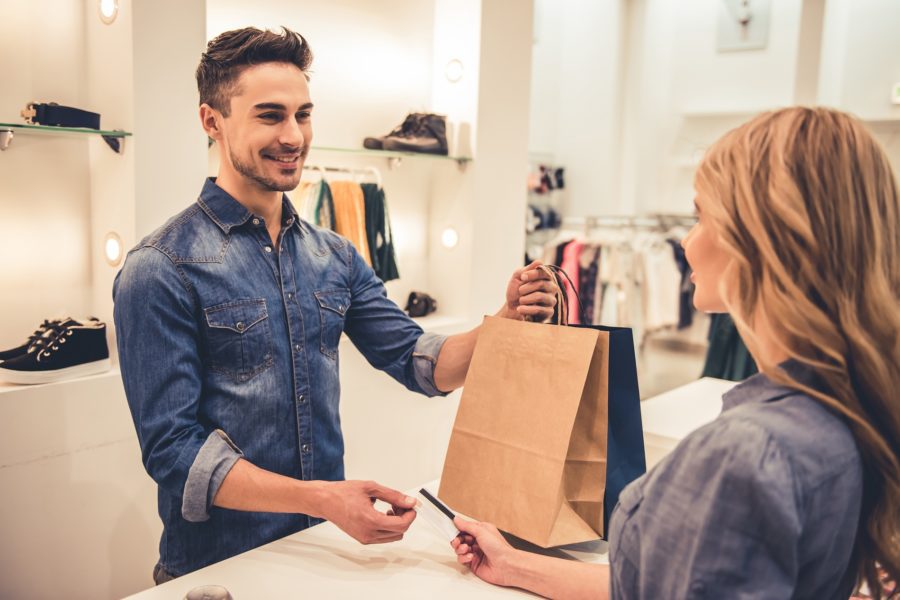
Our Blog
Redefining retail: 2024 trends in sustainability, delivery, and returns
Written by: Alexandrea Purvis
5 Min Read
Published: June 11, 2024
Updated: August 19, 2024
The rapid growth of e-commerce has sparked a transformative shift in how retailers, customers, and the digital realm intersect, ushering in innovation and new challenges. This modern digital landscape has catalysed significant changes in the market, compelling retailers to strategically adapt their approaches to delivery and returns and propelling digital innovation and human-centric experiences to the forefront.
In 2024, the convergence of the digital and physical worlds will continue, marked by the widespread adoption of new technologies and working methods to meet evolving customer expectations and behaviours. Below, we’ll explore four key areas where we anticipate innovation in the coming year that meet customer expectations on enhanced delivery, return options, sustainability, and the technology that will help strengthen these initiatives.
Sustainability remains a key priority for consumers
In the UK, the second-hand market is growing rapidly, with IBISWorld stating that as of 2024 the market size of the Second-Hand Goods Stores industry is £2.6bn an increase of 4.76% from 2023. Many UK retailers are also making moves towards sustainable practices, such as H&M offering a garment collection service and John Lewis launching a buy-back scheme for unwanted clothing. Additionally, brands like ASOS and Depop have established their own reselling channels, allowing them to compete with other resell sites like eBay and Vinted. However, as with the US, the increased demand for sustainable shopping options also presents challenges around managing increased orders, deliveries, and returns.
In 2024, we expect retailers to sustain their momentum in C2C shopping, catering to financially conscious consumers who want to prioritise sustainability without overspending. However, retaining customers within a particular retail brand inevitably leads to increased orders, deliveries, and a heightened potential for returns, necessitating enhanced processes to manage this surge, topics that we will delve into below.
Click and collect remains a consistent customer demand
In 2024, retailers are poised to address the escalating demand for delivery and collection options by expanding their click and collect offerings. Click and collect grew substantially in the wake of the pandemic, and remains a preferred shopping method among consumers, with the global market forecasted to reach $666 billion by 2028. As it solidifies its position as a cornerstone of the modern shopping experience, click and collect will continue to be an indispensable component of retail operations.
This year, to accommodate the surging growth of click-and-collect orders, retailers are expected to harness technology, such as parcel lockers or delivery lockers, to streamline delivery and supply chain operations. With 79% of consumers favouring stores with both a physical and online presence, the implementation of click and collect services is expected to expand, offering consumers more control over when and where they receive their orders while equipping retailers with a versatile tool to address delivery and return demands in a seamless, organised manner. Because parcel lockers are an adaptable solution, they can evolve alongside industry changes to match consumer expectations, making them the best tech partner for retailers.
Retailers to create enhanced return strategies
In 2023, the surge in e-commerce transactions led to a notable rise in retail returns, prompting concerns among retailers. According to a report by the National Retail Federation (NRF) in the United States, merchandise returns for the industry peaked at $743 billion in 2023, with an overall retail return rate of approximately 14.5%. This demonstrates the importance of a robust return process and strategy as it directly impacts customer experience, loyalty, and satisfaction.
This year, retailers will focus on refining their return processes while prioritising the optimisation of the overall shopping journey to minimise returns. Advanced technologies like AI (Artificial Intelligence), VR (Virtual Reality), and AR (Augmented Reality) will play a pivotal role in achieving this objective. These technologies empower customers to make informed decisions, reducing returns through improved product descriptions, sizing options, virtual try-ons, and customer reviews.
Moreover, parcel lockers will be instrumental in return management and processing this year, seamlessly blending online and in-store experiences with a focus on convenience and efficiency. Parcel lockers are an effective solution for handling deliveries and returns, taking less than thirty seconds to facilitate a collection or drop-off, enabling quicker restocking of items, and providing a convenient return-to-store option for consumers. Additionally, customers who experience faster returns are more likely to continue to shop in the store, presenting increased opportunities to recover sales through new purchases.
Reimaging retail tech partnerships with parcel lockers
This year, parcel lockers are poised to become retailers’ go-to solution, bridging the gap between online and in-store experiences. By offering online order collections and returns through parcel lockers, retailers can create a seamless and scalable approach to retail, fostering dynamic business growth that will endure into the future, particularly as e-commerce and in-store foot traffic continue to increase.
How do lockers help retailers?
- MORE Streamlined business operations: Attain operational efficiency, mitigating challenges in labour recruitment and retention to gain a competitive edge.
- MORE customer satisfaction: Boost your Net Promoter Score (NPS) by exceeding evolving customer expectations with a fast, dependable, self-service solution. 45% of customers who use parcel lockers are more inclined to make repeat purchases within 30-60 days compared to non-locker pick-up methods.*
- MORE cost savings: Minimise expenses linked to package fulfilment and returns by establishing a comprehensive solution for all customer deliveries and returns to one convenient location.
- MORE Sustainability: Decrease greenhouse gas emissions, alleviate roadway congestion, and mitigate CO2 pollution by consolidating packages to a centralised location within retail stores.
In addition to the capabilities and business advantages that parcel lockers provide retailers, customers also benefit from an additional option for making online and in-store purchases or returns. This self-service process eliminates the need for waiting in long lines, ensuring convenience and efficiency. Customers can rely on the secure storage of their orders in the locker, enhancing their overall experience and fostering greater loyalty to the retailer.
MORE innovation to come in 2024
This year, retailers are gearing up for a fresh wave of innovation. Their goal? Crafting a seamless delivery and returns journey that fully aligns with consumer demands. This entails implementing strategies and processes that meet current and future expectations to deliver longevity, scalability, and organisation. By embracing groundbreaking technologies such as AI, VR, AR, and parcel lockers, retailers aim to establish a solid framework for a contemporary retail landscape, surpassing the status quo and propelling the retail industry to new, innovative heights.
Download our white paper, “Forecasting the Future: Our Predictions for Retail in 2024”, for more insights on what to expect in 2024.
*Based on customer results. Your results may vary.






